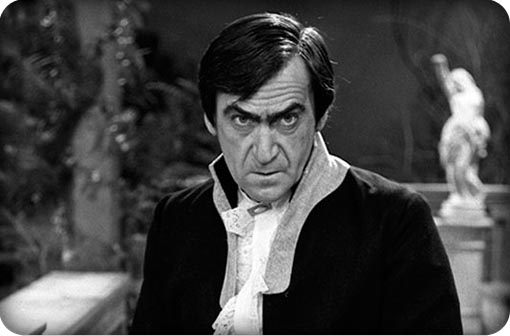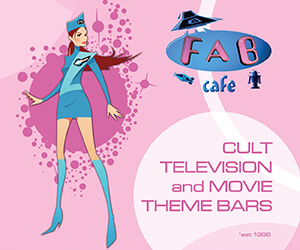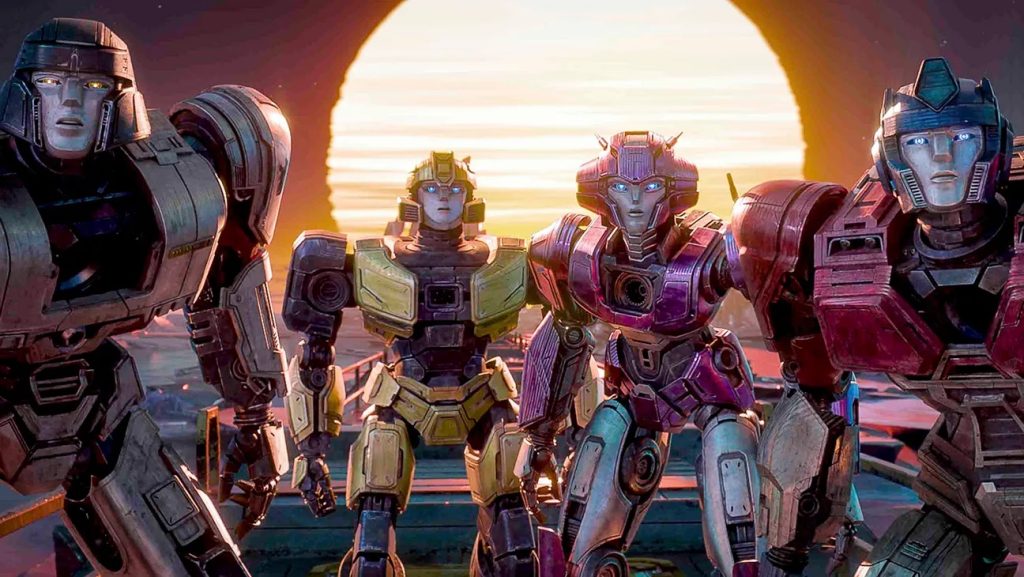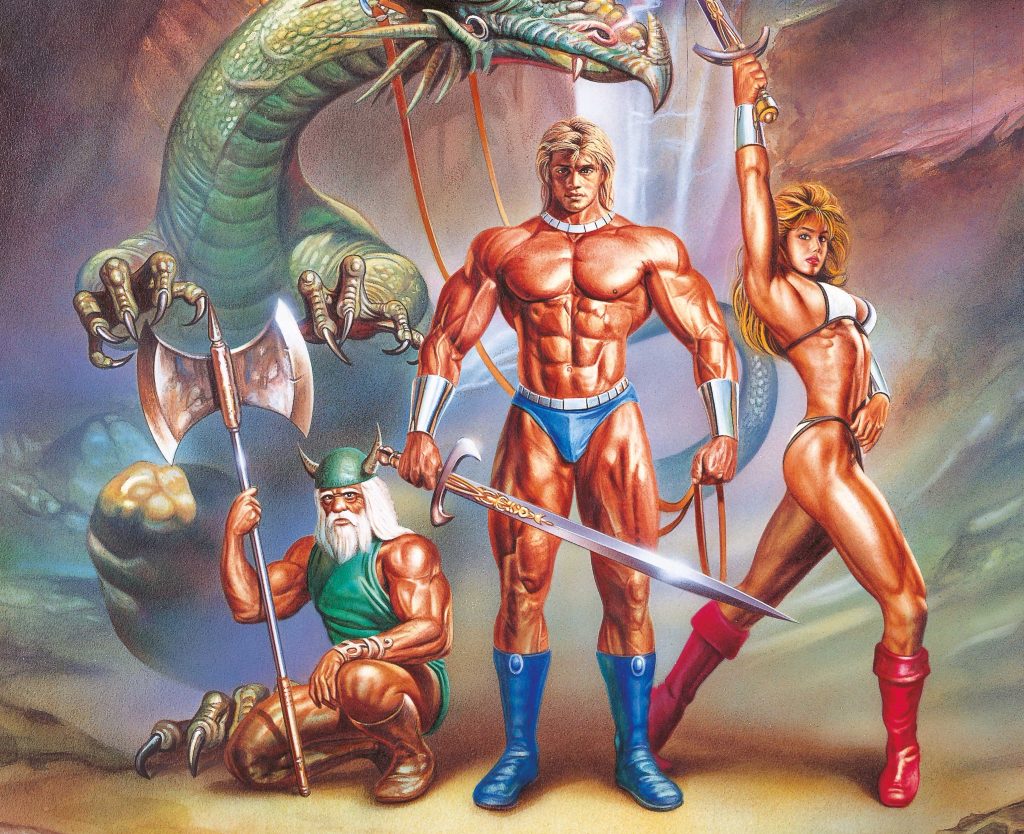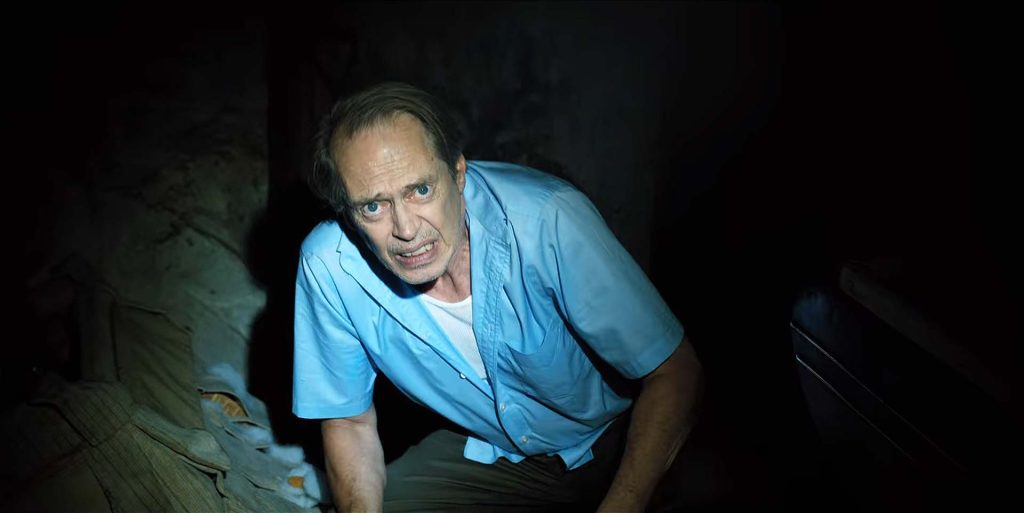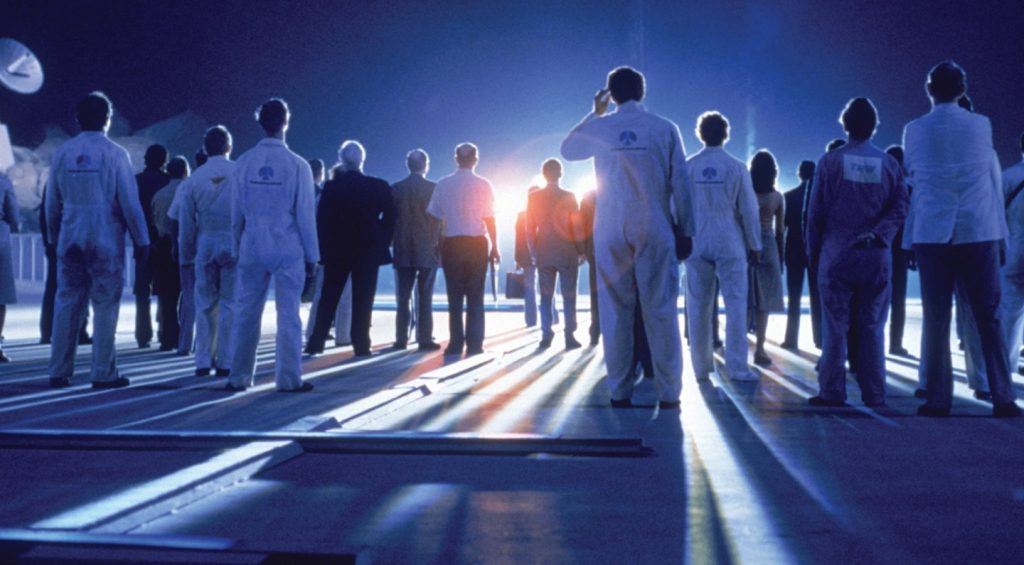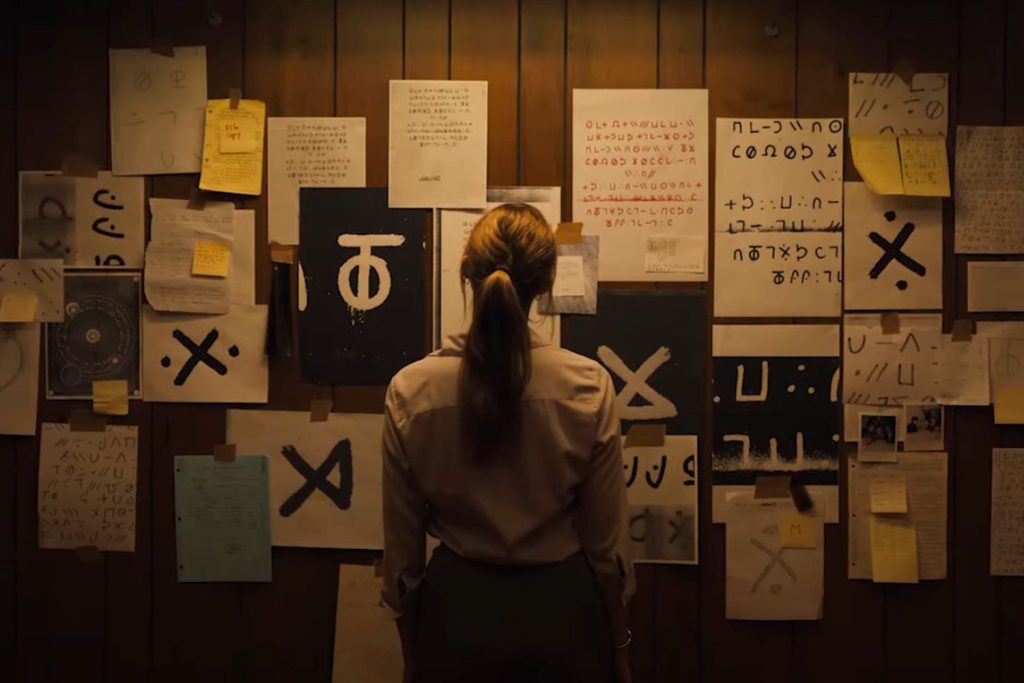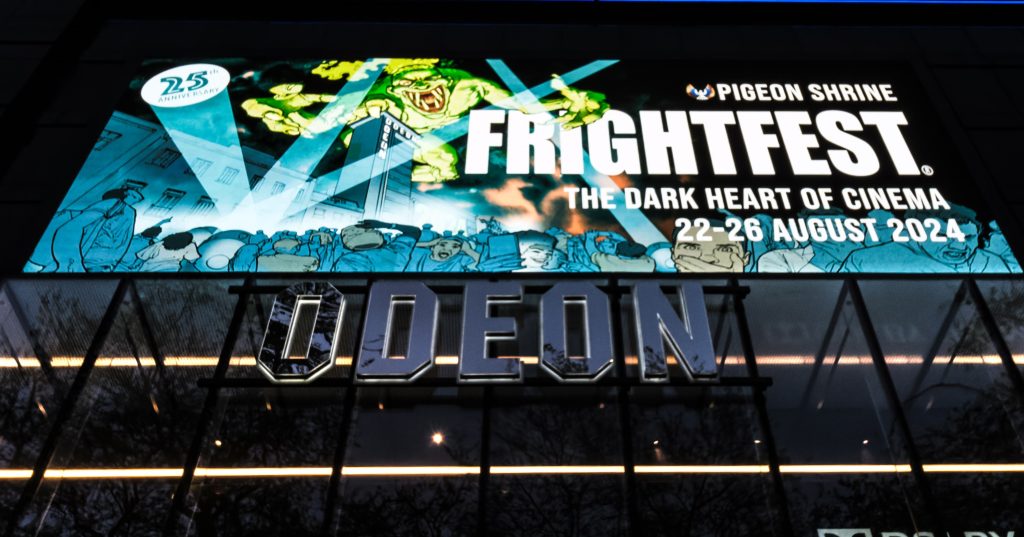
Review: Doctor Who – The Enemy of the World / Cert: PG / Director: Barry Letts / Screenplay: David Whitacker / Starring: Patrick Troughton / Release Date: November 25th
There’s a moment in Episode 2 of The Enemy of the World where, upon mishearing one of the other characters, Patrick Troughton’s second Doctor pulls one of those timeless and inimitable faces of his and retorts, “Disused Yeti?!”
His reaction couldn’t have been more appropriate. These two newly discovered Doctor Who stories have been sitting, disused, on a shelf somewhere in Africa for nigh on forty years. It is an entirely unexpected and welcome pleasure to be able to experience them again. Nine “new old” episodes of Patrick Troughton as the Doctor (and not just as the Doctor) is something to cherish indeed in the series’ anniversary year, and Steven Moffat’s claim that Doctor Who would be “taking over television” has suddenly taken on a whole new meaning.
And what of the two stories?
The Enemy of the World has long been considered an odd fish (by those who’ve bothered considering it at all), tucked away as it is in the middle of Doctor Who’s fifth and so-called “Monster Season”. Even Troughton’s dual role as the second Doctor and lead villain Salamander hasn’t been enough to raise its profile, and generally speaking it has been thought of a misstepping James Bond pastiche. While that’s not entirely wide of the mark, what’s striking about being able to actually watch the story is in how much it resembles the recently defunct historicals that Gerry Davis and Innes Lloyd were so keen to get rid of. The fact that it’s written by David Whitaker – the man responsible not just for the scripts of The Crusade but who also oversaw such serials as Marco Polo and The Reign of Terror – means that that oughtn’t to have come as a surprise. Hearing the audio and perhaps even watching a reconstruction, we knew The Enemy of the World was a carefully plotted, character-driven story, but the visuals – once Episode 1’s ostentatiously cinematic film-work is out of the way – nail the story even more tightly to this way of thinking.
It’s very much a Doctor Who serial about people, and Barry Letts, directing in his first brush with the show, assembles an impressive guest cast to oil the wheels of Whitaker’s plot. There aren’t too many surprises in the performances in the first half of the story, as the previously extant Episode 3 was always a good guide to the characters therein (in spite of it being the story’s least representative instalment), but the amount of time Troughton’s Doctor spends in the company of Bill Kerr is pleasing; Kerr creates a very naturalistic Giles Kent and he and Troughton complement one another beautifully. Milton Johns is deliciously oily as Benik and Colin Douglas is a bullish Donald Bruce (whose uncertainty towards the end of the story is played very credibly), and it’s wonderful to be able to see more of them. It’s also a delight to spend more time in the company of Carmen Munroe and Mary Peach as Fariah and Ferrier (the latter fortunately known by her forename, Astrid, to all involved), two of the more earnest and striking roles in the production – and with audaciously characteristic retro-futuristic costumes to match. Astrid in particular is so very 1968, a typically “strong” female role but in a post-Avengers “action woman” sense, yet Munroe steals the early episodes with the honesty and strength she brings to her part. There’s a balance between the sincerity in some of the roles and what verges on caricature in others that Letts manages unexpectedly well, and would develop even further when he took charge of the programme.
It’s the point midway through Episode 4 when Salamander travels to his secret base that is conversely the moment when the story’s plausibility begins to dip, and when the experience of watching it afresh really takes flight. There’s no disguising that this plot twist plants The Enemy of the World firmly in the territory of the spy thriller for children, and that might well come as a surprise to those who’ve been brought to the story through Ian Marter’s novelization, but this is also where the newly found episodes lead us into the province of the brand new. The underground set is expansive and the number of extras generous (and most interestingly costumed), and The Enemy of the World really begins to move up a gear here, at a moment when another writer or director might have risked losing the story’s momentum. Episode 6 is almost frenetic in the amount of plot it manages to get through, and but for a few edits for technical reasons in the final scene (which leave the conclusion rather rushed and bordering on incomprehensible; the TARDIS goes from stationary to in-flight in the blink of an eye), there’s a verve about the storytelling that’s infectious. It might have sounded confused on audio, but with the aid of the visuals, it sweeps you along rather than leaving you behind. Very impressive, given the budget and the methods by which 1960s Doctor Who was made. It would have been so easy to fluff the story’s last episode, but Barry Letts pulls it all off with aplomb.
Letts’ direction here is always more than capable, in fact – despite what we might have expected from his subsequent efforts – and keeps The Enemy of the World rather lighter on its feet than, for example, previous story The Ice Warriors. There’s a sense of forward momentum in David Whitaker’s script that makes for a faster-moving six-parter than we’ve come to expect from other extant 1960s Doctor Who. Letts’ studio work is punctured by enough extreme close-ups to keep it interesting, while his outdoor filming is expressive and fun, in spite of being shot on a shoestring by comparison with the films it so clearly wants to be. His later stylising of UNIT is clearly evident in the way the beach scenes work in Episode 1, and it’s lovely to see just how much location work there is in this first instalment (and lots of fun spotting the back-projection that doubles for outdoors elsewhere, the kind of scenes that Letts would readily use CSO to produce once Doctor Who began colour production two years later). Letts’ direction and Whitaker’s script also perform a brave and gymnastic balancing act in keeping the “two Troughtons” apart during the hectic studio sequences; in common with most of the period’s serials, The Enemy of the World was largely recorded “as live” and the costume changes as Troughton switches from one character to the other must have been lightning-quick. The more technically minded will have fun spotting which scenes are parachuted in on film in order to disguise the joins.
Which brings us to the restoration. There are the occasional moments when the soundtrack sounds just the tiniest bit hollow, or the picture wobbles slightly (notably backgrounds shifting behind characters, and most apparently in Episode 2, which must have been in the worst condition), but neither of these things are anything more than almost entirely indistinguishable to the naked senses. And that’s a testament to the skills of the restoration team who have worked on these episodes. It might have spent several decades sitting on a shelf in some hot and humid African country, but thanks to the likes of Peter Crocker and Mark Ayres, The Enemy of the World looks and sounds just about as good as it must have back in 1967/8. It’s also sweet to finally discover that the entire production was shot in 625-line video, rather than just the latter four instalments as had long been suspected the case, and thanks to this Episodes 1 and 2 look just as sharp as the rest of the story.
Ultimately, the main focus of people watching The Enemy of the World will be on Patrick Troughton’s performance as the Doctor, and unsurprisingly, Troughton lives up to his reputation. He’s just as cherishably instinctive and unpredictable as we might have hoped, his joy in Episode 1 at landing the TARDIS right by the sea is as infectious as the character has ever been – and just as surprising, when he strips right down to his underwear, and does a skip on the beach that pre-empts that famous shot from The Invasion – and by Episode 6, the way the actor switches between Doctor, Salamander and Doctor-as-Salamander is astonishing, a performance to truly treasure. We are so lucky to have returned to the archives of the story with two Troughtons for the price of one; this is almost certainly the actor’s finest performance in the part.
Beyond that, this isn’t quite “classic” Doctor Who. It’s a story that never entirely engages as a children’s version of an adult story type, but it’s really not that far from achieving its goals, and it’s much faster, much bigger and much more engaging than many other stories of its time. Rather than the forgotten gem of Season 5, the rediscovery of this story will no doubt see it reassessed as one of the jewels in the season’s crown.
But you know what? I still can’t quite get over the fact that I’ve just watched it, in its entirety. It’ll probably be another forty years before that really sinks in.
Extras: TBC


